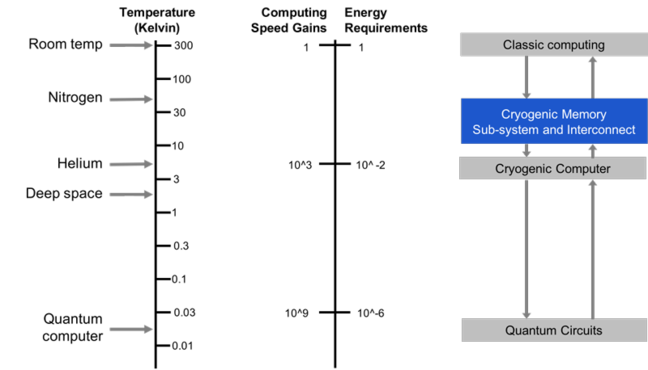Microsoft and Rambus cool memory to cryogenic temperature
Microsoft and Rambus, with experience in the development of memory chips, announced that they are beginning to work together on a prototype of memory for cryogenic computing systems.
 / Flickr / FutUndBeidl / CC
/ Flickr / FutUndBeidl / CC
The goal of their work is to increase the energy efficiency of DRAM at ultra low temperatures. Representatives of Rambus say that this approach will reduce the cost of memory ownership for data centers, as well as provide new opportunities for scaling.
')
“Attempts to increase the volume and efficiency of memory in traditional ways are increasingly facing new challenges,” said Dr. Gary Bronner, vice president of Rambus Labs. “The first results of our study show that a significant change in the operating temperature of DRAM using cryogenic techniques will help develop storage systems.”
Rambus engineers will try to bring the ambient temperature of classic modern supercomputers (300 K) and cryogenic computer systems (4 K) to a common denominator by developing subsystems capable of operating at 77 K and interacting with computing systems operating at 4 K.

In the future, cryogenic memory will become an integral part of cryogenic computers. At low temperatures , the effect of superconductivity manifests itself and the losses in the power system of computers are reduced to zero. At the same time, quantum computers will operate at an even lower temperature - at 0.03 K. Therefore, Rambus and Microsoft decided to develop two memory architectures that work with different cooling.

Rambus and Microsoft will also create SerDes (Serializer / Deserializer) interfaces that can work in such conditions. Engineers promise to submit prototypes of working systems for three to five years.
PS Here are some more materials from our blog:
 / Flickr / FutUndBeidl / CC
/ Flickr / FutUndBeidl / CCThe goal of their work is to increase the energy efficiency of DRAM at ultra low temperatures. Representatives of Rambus say that this approach will reduce the cost of memory ownership for data centers, as well as provide new opportunities for scaling.
')
“Attempts to increase the volume and efficiency of memory in traditional ways are increasingly facing new challenges,” said Dr. Gary Bronner, vice president of Rambus Labs. “The first results of our study show that a significant change in the operating temperature of DRAM using cryogenic techniques will help develop storage systems.”
Rambus engineers will try to bring the ambient temperature of classic modern supercomputers (300 K) and cryogenic computer systems (4 K) to a common denominator by developing subsystems capable of operating at 77 K and interacting with computing systems operating at 4 K.

In the future, cryogenic memory will become an integral part of cryogenic computers. At low temperatures , the effect of superconductivity manifests itself and the losses in the power system of computers are reduced to zero. At the same time, quantum computers will operate at an even lower temperature - at 0.03 K. Therefore, Rambus and Microsoft decided to develop two memory architectures that work with different cooling.

Rambus and Microsoft will also create SerDes (Serializer / Deserializer) interfaces that can work in such conditions. Engineers promise to submit prototypes of working systems for three to five years.
PS Here are some more materials from our blog:
- Data center cooling technologies
- “Small yes remote”: scientists have developed a flow battery that cools the chips
- Backup & Recovery: in-line and smart deduplication, snapshots and secondary storage
Source: https://habr.com/ru/post/326946/
All Articles